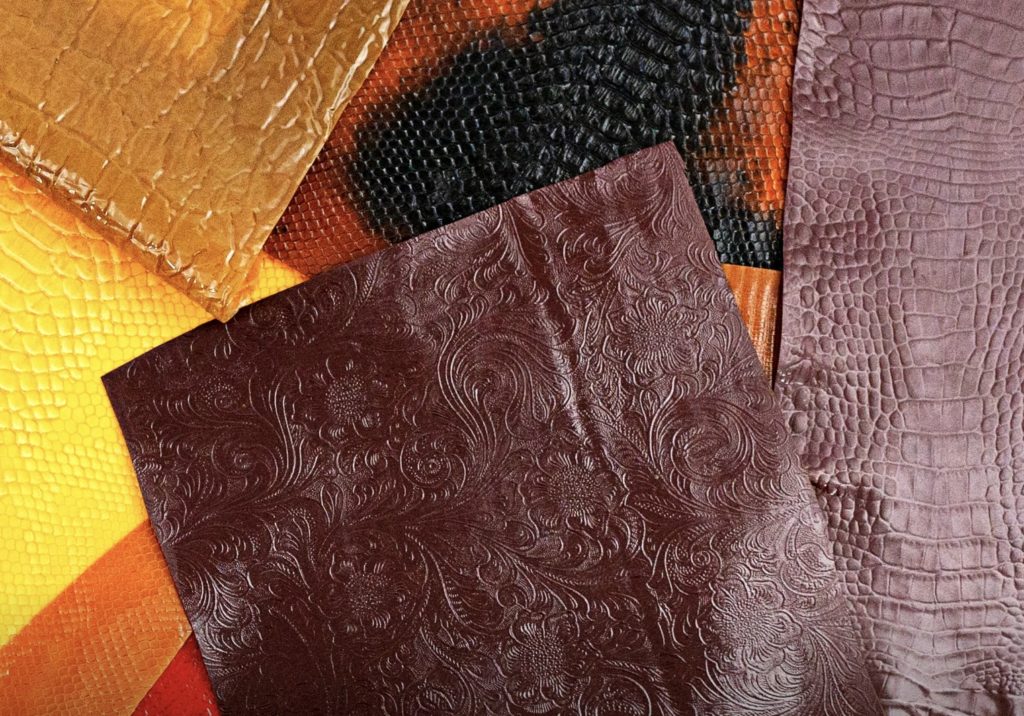
Shrimp shell-based “leather” maker TômTex (IndieBio NY03) was recently the subject of two feature articles from Bloomberg and WIRED.
TômTex turns raw chitosan—a biopolymer that makes up crustacean shells, mushroom cell walls, and insect exoskeletons—into a viscous liquid that can be dyed, molded, stamped, and 3D printed. The final product can act as a one-to-one stand-in for any traditional leather item, ranging from wallets to designer pants and tank tops. The best part: TômTex’s leather-like material is biodegradable, cost-effective, durable, recyclable, non-toxic, and realistic. It has the look, feel, and wearability of cow leather, Bloomberg and WIRED both agree.
While leather alternatives are abundant, most options, like polyurethane and PVC (petroleum-derived materials), are prone to cracking and peeling—to speak nothing of the materials’ detrimental effects on human health and the environment. In contrast, TômTex’s material is based on chitosan, one of the most common biopolymers on earth, making it affordable and easy to source as shrimp shell waste from the enormous seafood industry.
TômTex has already attracted the attention of high-end designers like Peter Do, big-name leather retailers, a sneaker brand, and an athletic wear brand. With interest in TômTex boiling over, the company is expanding to a larger pilot production space, where it hopes to scale up production. The team believes its chitosan material is compatible with widely-available machinery for developing polyurethane and PVA, simplifying this scaling process even more.
“We’re hopeful that within this year, there’ll be something that people can actually get their hands on,” Ross McBee, TômTex’s cofounder and chief science officer, said to WIRED.
By the end of 2023, the company plans to produce its alternative leather on the scale of 100,000 yards a year.
